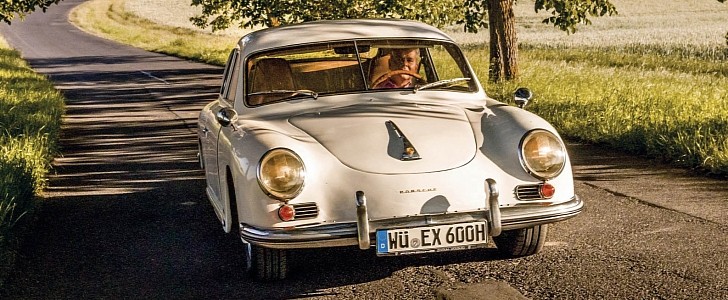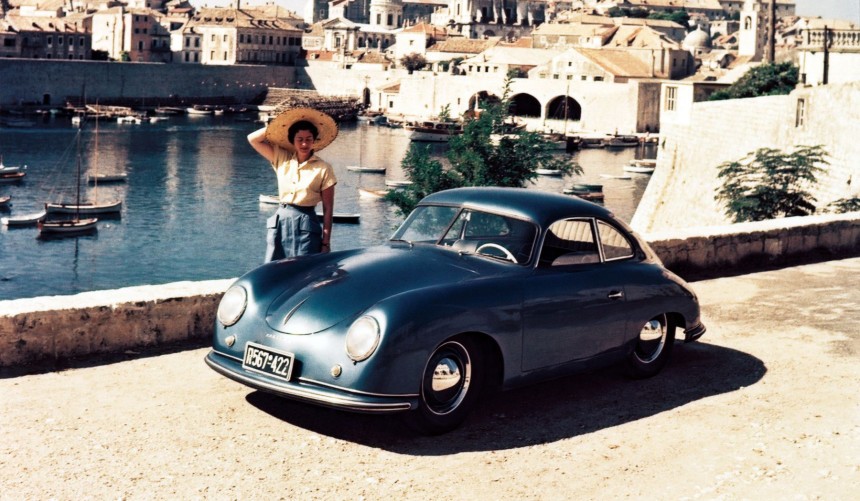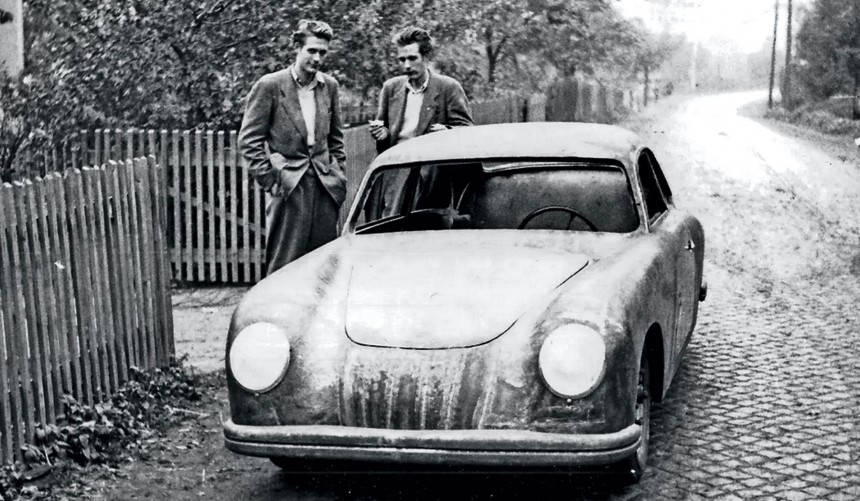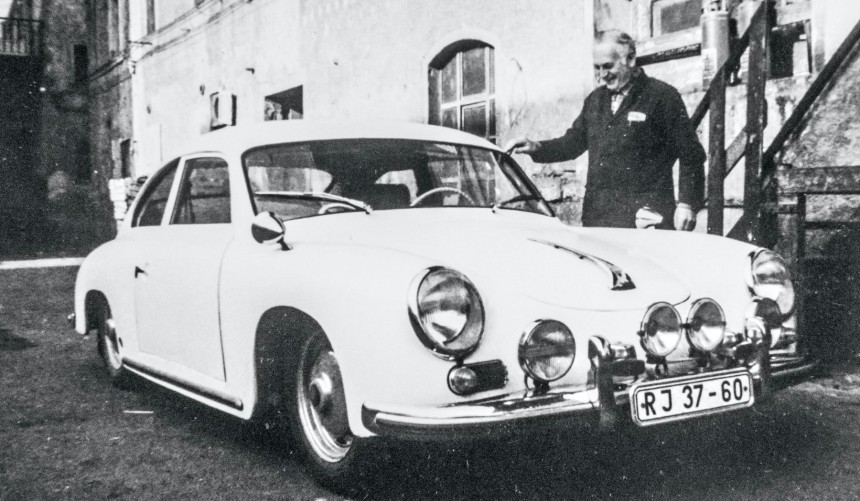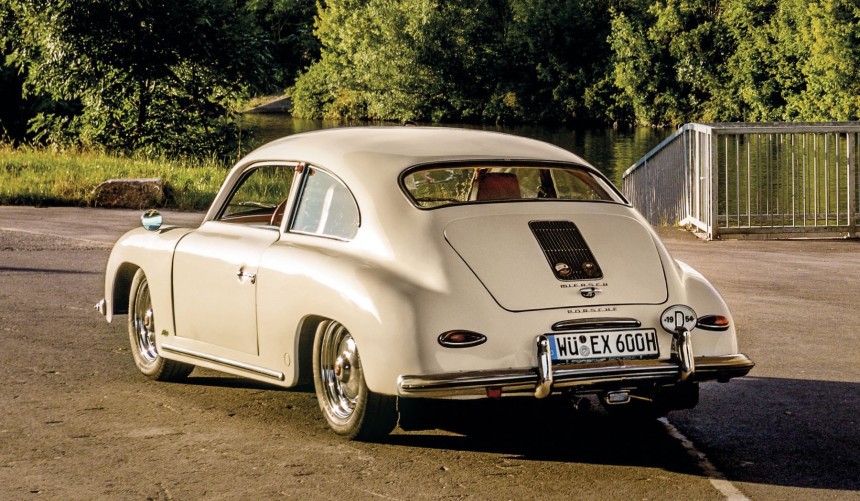Although imports of western-built Porsches were prohibited in East Germany, Hans Miersch didn’t give up on the dream of owning a 356 and decided to build one himself. He risked his freedom on multiple occasions, smuggling parts from West Germany, and with the help of other automotive enthusiasts, including Ferry Porsche, his dream came true.
After the Second World War ended, Germany soon found itself divided into two halves. While the Allied-controlled West quickly rose from the ashes and prospered, in the communist East people were living a very different life.
Among them was Saxony native Hans Miersch who, despite losing the lower part of his right leg during the conflict, never lost hope and motivation. He set up a women’s shoemaking workshop in the small town of Nosse. To sell the products and source materials, he was allowed to travel across the border to "sister" countries like Hungary, Poland, or Czechoslovakia and, on rare occasions, even to the neighboring capitalist state.
In the early 1950s, he discovered the breathtaking Porsche 356 in a West German automotive publication and instantly fell in love. Still, even for a successful entrepreneur like Miersch, importing one into East Germany was impossible, so he began thinking about building one himself.
During this time, about 25 miles (40 km) away from his workshop, in the city of Dresden, 21-year-old twins and Porsche enthusiasts, Falk and Knut Reimann, were embarking on the same quest.
While studying at the town's technical university, they designed a coupe inspired by their favorite car, the Porsche 356, and decided to build it.
They received help from coachbuilder Arno Lindner who put their designs into practice by creating a skeleton out of ash wood over which the bodywork could be fitted and then bolted or welded to a chassis. That was sourced from a Kübelwagen Type 82 military vehicle designed by Ferdinand Porsche during the war.
Miersch learned of the brothers’ endeavor and got his chassis from a local farmer. Although procuring one wasn’t particularly difficult since many Type 82s were left behind by retreating German soldiers, the shoemaker faced a serious hurdle: he couldn't find sheet metal of suitable quality anywhere in East Germany.
He used his relationships in Czechoslovakia to acquire around 322 square feet (30 square meters) of thick sheet metal and commissioned Lindner to construct the bodywork. Because the chassis was around 11.8 inches (30 cm) longer and significantly wider than the Porsche 356's body, the resulting car became a spacious yet heavier four-seater.
Securing the additional components required to complete the built was the most difficult part of the process. Miersch smuggled the parts from West to East in a large briefcase, risking a long and arduous prison sentence in his home country.
He made numerous trips across the heavily guarded border, and after seven months, in November 1954, the bespoke Porsche was ready to hit the road. Initially, it was powered by a 30-hp boxer which was grossly underpowered for the 3,527-pound (1,600 kg) vehicle. Twelve years later, he managed to import a dismantled 75-hp 1.6-liter Porsche engine which proved much more adequate for his treasured 356.
Although his business was confiscated by the communist state in the early 1970s, Hans Miersch avoided losing the car as well. He pulled that off by convincing authorities that it was a personalized, self-built vehicle designed specifically for his disabilities.
Both the owner and his beloved car survived socialism, and soon after the reunification of Germany, the latter received an original 90-hp engine from a Porsche 356.
In 1994, he decided to part ways with his lifelong companion, selling it to Porsche enthusiast and current owner Michael Dünninger. The latter has made some improvements to the car, including the reupholstered seats now adorned with cognac-brown leather.
Although it wasn’t built in Zuffenhausen, the German carmaker recognizes the Miersch 356 as a legitimate Porsche. The bespoke creation is regarded as a timeless piece of automotive history that proves how passion and resilience prevailed in an era when Germany and the world were divided into East and West.
Among them was Saxony native Hans Miersch who, despite losing the lower part of his right leg during the conflict, never lost hope and motivation. He set up a women’s shoemaking workshop in the small town of Nosse. To sell the products and source materials, he was allowed to travel across the border to "sister" countries like Hungary, Poland, or Czechoslovakia and, on rare occasions, even to the neighboring capitalist state.
In the early 1950s, he discovered the breathtaking Porsche 356 in a West German automotive publication and instantly fell in love. Still, even for a successful entrepreneur like Miersch, importing one into East Germany was impossible, so he began thinking about building one himself.
While studying at the town's technical university, they designed a coupe inspired by their favorite car, the Porsche 356, and decided to build it.
They received help from coachbuilder Arno Lindner who put their designs into practice by creating a skeleton out of ash wood over which the bodywork could be fitted and then bolted or welded to a chassis. That was sourced from a Kübelwagen Type 82 military vehicle designed by Ferdinand Porsche during the war.
He used his relationships in Czechoslovakia to acquire around 322 square feet (30 square meters) of thick sheet metal and commissioned Lindner to construct the bodywork. Because the chassis was around 11.8 inches (30 cm) longer and significantly wider than the Porsche 356's body, the resulting car became a spacious yet heavier four-seater.
Securing the additional components required to complete the built was the most difficult part of the process. Miersch smuggled the parts from West to East in a large briefcase, risking a long and arduous prison sentence in his home country.
Although his business was confiscated by the communist state in the early 1970s, Hans Miersch avoided losing the car as well. He pulled that off by convincing authorities that it was a personalized, self-built vehicle designed specifically for his disabilities.
In 1994, he decided to part ways with his lifelong companion, selling it to Porsche enthusiast and current owner Michael Dünninger. The latter has made some improvements to the car, including the reupholstered seats now adorned with cognac-brown leather.
Although it wasn’t built in Zuffenhausen, the German carmaker recognizes the Miersch 356 as a legitimate Porsche. The bespoke creation is regarded as a timeless piece of automotive history that proves how passion and resilience prevailed in an era when Germany and the world were divided into East and West.
